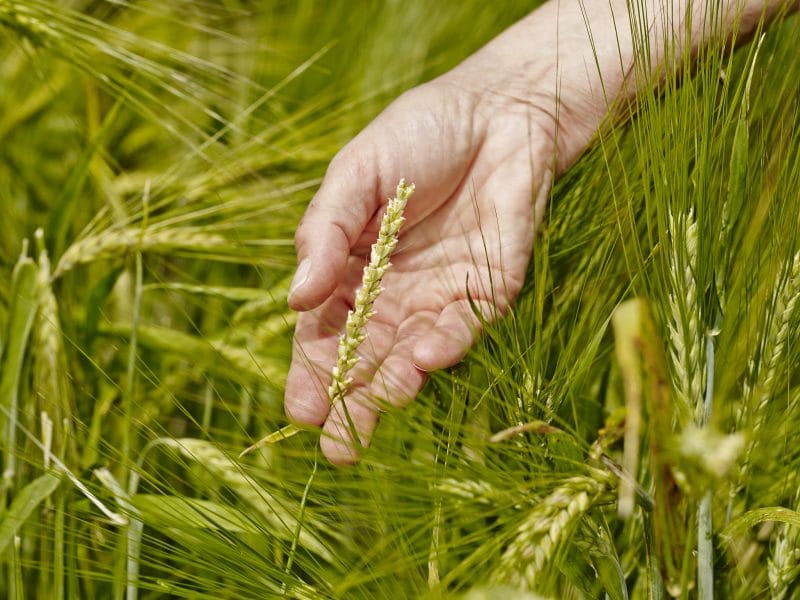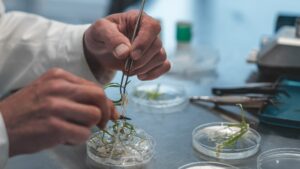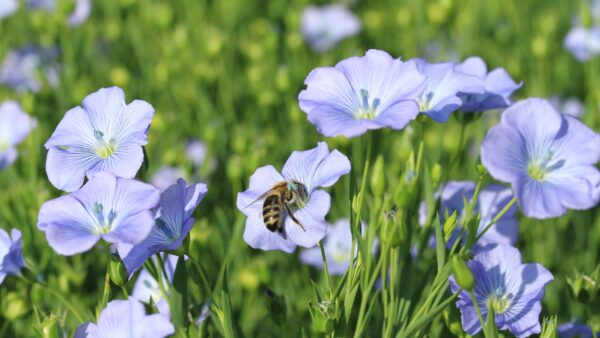Checking in on the latest challenges, goals and innovations being used by major breeders of this diverse crop
Many around the world may not know that barley, because it can be used in several important ways and can be grown in diverse conditions, is the world’s fourth largest grain crop. It is only surpassed by maize, rice and wheat. Barley also has a long history of cultivation. According to Oxford Academic, the crop was domesticated about 8000 B.C. Wild ancestors of the plant are still found in grasslands and woodlands throughout the Fertile Crescent area of Western Asia and northeast Africa.
Barley is a robust plant that can be grown in many types of environments, including marginal areas and higher altitudes. However, at this point in time, spring barley is a much more global crop than winter barley, explains Alexander Strube, Managing Director at Ackermann Saatzucht. “It can essentially be grown anywhere in the world, from Nepalese highlands and near-arctic Iceland to the Egyptian desert. As such, we test our germplasm in basically every barley growing region of the world, from Siberia to Africa to Argentina.”Spring barley breeding also is significantly faster than for the winter form, with shorter vegetation cycles that permit the use of counter-season nurseries mainly in Chile and New Zealand.
In addition, Rasmus Hjortshøj notes one thing that makes spring barley lines easier to breed, its habit to be highly self-pollinating that allows two lines to be grown almost next to each other without crosspollination being an issue. Winter barleys, explains the Winter Barley Breeder at Sejet Plantbreeding, require longer distances, more isolation and rouging for purity to be maintained. However, because spring barleys generally have a wider growing adaption, notes Rob Hiles (Syngenta’s Seed Business Sustainability Lead for Europe),they need a broader spectrum of disease resistance and general agronomic attributes.
Barley is mainly used today for food products, alcoholic beverage production and in animal feed. With these varied applications, it’s therefore no surprise that breeding companies have a wide range of focuses. For example, Syngenta’s spring barley breeding programme is centred currently on malting, distilling and brewing, and its winter barley programme is focused on hybrid feed and early stage development of hybrid malting types. Syngenta was the first company globally, in 2003, to hybridize winter barley and commercialise at scale across Europe, Hiles explains. This development, he says, involving six row varieties has had a significant impact on lifting yields and increasing yield stability.
“Initially, Syngenta’s winter barley breeding was focused on high quality two row varieties suitable for United Kingdom beer brewing and then hybrid six rows for yield,” Hiles reports. “Future developments are likely to see hybrid winter malting barleys marketed to continental European growers and brewers, driven by beer brands increasingly focusing on sustainably and environmentally-driven supply chains.” In Northern Germany, for example, he says irrigation is commonly used for spring barley, which is creating water shortages and additional testing of winter barley to help save water is taking place.
Major barley markets KWS breeds for include brewing, distilling and feed plus smaller ones like food ingredients and pearling, says Sandra Dunckel, Deputy Head of Breeding Barley. This is achieved through a combination of spring and winter barley (6 row and 2 row).
The breeding at Ackermann Saatzucht is almost entirely dedicated to barley, with equal emphasis on spring barley, 2 row winter and 6 row winter. “We have a strong emphasis (60 per cent overall) on malting types for brewing and whiskey, and 40 per cent on feed types,” says Strube. “In addition, we are hoping that barley for food use will step out of its niche in the near future.”
At Sejet, all spring barley bred and selected for malting purposes, and only when the quality is not sufficient, but yield and agronomy is good, will varieties for the feed market be developed, explains Lene Krusell (Spring barley breeder at Sejet).The main focus for its winter barley is feed, with malt taking up about 15 per cent of the programme.
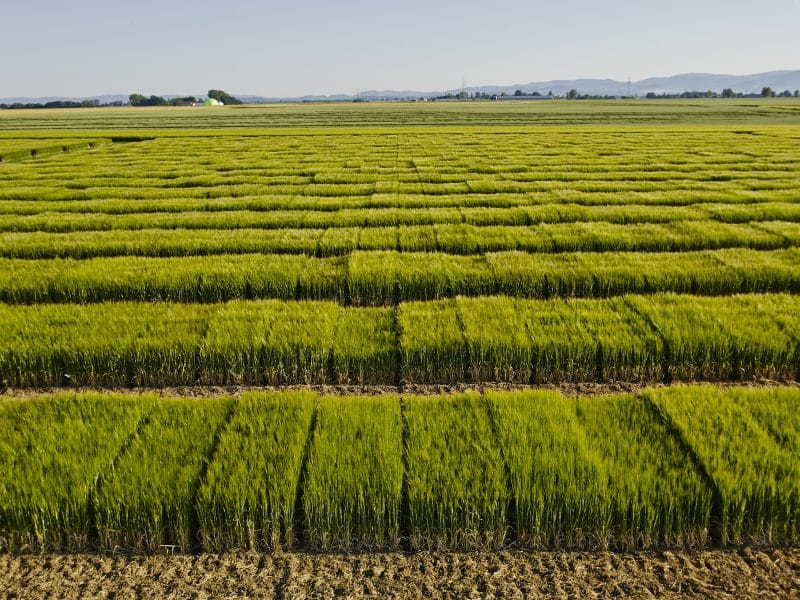
(Photo: Ackermann)
Breeding for malting
Besides malting quality, barley is also bred with the goals of disease resistance, physical grain quality and straw stiffness, says Dunckel, along with adaptation to conditions (yield stability) in environments across wide areas of Europe. Tastes and recipes for beer production also vary across countries, so this affects what varieties are grown.
However, Strube says while there is currently a growing interest in flavour components in barley varieties, the most essential drivers of malting quality are of economic nature: extract yield, processing time/energy, viscosity & filtration time, colloidal stability, presence of off-flavours and so on. “In total we screen for about 30 traits,” he says, noting that in particular, “the resource efficiency of particularly malting barley is very significant; to be able to produce both malt and beer with less energy and resources is of utmost importance.”
Malting quality is genetically extremely complex and also influenced by the environment in which the barley is grown. Quality requirements can also vary somewhat between different malting companies depending on their particular processes, says Dunckel, which all makes for difficult and cost-intensive breeding efforts. And, of course, the costs to develop a variety for a specific market, adds Hjortshøj, are basically the same whether the market is small or large, and farmers usually prefer to grow varieties with large markets.
However, he notes that beer brewers generally want the same as farmers, high and stable yield at costs as low as possible. “In other words, they want a high extract per kilo, in combination with a fast, uniform germination, followed by low viscosity and high filtration speed. Some of these traits are controlled by few genes like Œ±- and Œ≤-amylases, but others are more complex like extract, and again, to some extent influenced by environment.”
Hiles echoes these thoughts, explaining however that whilst the ‘big’ beer brands require quality parameters such as extract and fermentability to be consistent across differing environments across the EU, specialised craft brands want locally grown barley with consistent protein levels over varying years and non-fermentable sugars.
“The emergence of craft brewers is leading barley breeding more towards flavour- and mouth-feel-oriented, slow-processing varieties with normal modification,” adds Strube, “the opposite of what industrial breweries are looking for. On the other hand, the increasing beer consumption in emerging markets also sets new trends in breeding: high modification & high FAN levels are required for such markets, with almost all beer brands using adjuncts.”
Within the last few years, Krusell notes there has been a large focus on breeding non-GN (glycosidic nitrile) dual-function varieties, especially in UK and Ireland. These varieties are optimal for both brewing and whiskey distilling. Hiles notes that with the use of marker technology, screening for the presence of GN is now quite rapid, and that high PSY (predicted spirit yield) is also an important selection criterion for the distilling market. Strube adds that whiskey distillers also want High-Diastatic Power varieties to improve the economic efficiency of the process.

Yield and disease resistance
According to these breeding firms, barley yields are increasing by 0.5 to 2% a year in Western Europe, but in other parts of the world where older varieties are being replaced by new ones, yearly gains can of course be much higher. They report a range of years required for full development of a new variety, from four to nine, and although spring barley has a counter-season breeding cycle, Hjortshøj notes that new spring varieties do require a year or two of industrial malting tests (on top of the agronomy approval) to get them to market. Still, Hiles says, “the tools (doubled haploid, markers, genomic selection, SSD) available to plant breeders now versus 20 years ago have significantly improved the speed at which a new barley variety can be brought to market.”
While disease management depends largely on growing area and farming practice, and may change with climate change, notes Strube, breeding for resistance is obviously an important target. “In winter barley, insect-transmitted viruses such as barley yellow dwarf virus and wheat dwarf virus are a major threat, and the neonics ban is a big factor,” he reports. “In spring and winter barley, Ramularia has become more important due to the ban of Chlorthalonil.” But effective resistance against the main diseases is present: soil-borne yellow mosaic viruses in winter barley, barley mild mosaic virus, powdery mildew and leaf rust, with resistance level against scald higher in winter than in spring barley. And although the use of marker techniques will certainly help breeders to increase resistance levels, says Strube, diseases continue to adapt very quickly.
“Not only do we see shifts in the race structure of established diseases such as mildew, but new diseases are also appearing all the time,” Dunckel explains. “Barley yellow dwarf virus and Ramularia are developing rapidly, with the latter being the standout problem right now. No useful resistance to this disease has been found.”
Hjortshøj agrees that Ramularia is a growing problem, with resistance particularly difficult to breed for as symptom development is highly dependent on environment, and resistance levels also influenced by environment factors as well as the physiological stage of the plant. He says that in Denmark, Rust, Scald and Net Blotch (Net type) are probably at the moment the costliest diseases, and that whilst mildew is more or less tackled in spring barley, it’s still a problem in winter barley.
In Hiles’ mind, breeders need to take a long-term view on many factors relating to disease targets, but the main focus is on Rhyncosporium, mildew, ramularia and Fusarium Head Blight (FHB) in spring barley and Rhynchosporiumand net blotch in winter barley. “Due to seed treatment product withdrawals and restrictions the need for Barley Yellow Dwarf Virus (BYDV), varietal resistance will become increasingly important, to ensure damage during early stages of developments can be avoided,” he says. “The effects of BYDV can also be impacted by adverse weather conditions, soil acidity and other pests and diseases. Ensuring the crop gets off to a good start is critical in laying the foundations for a successful outcome.”
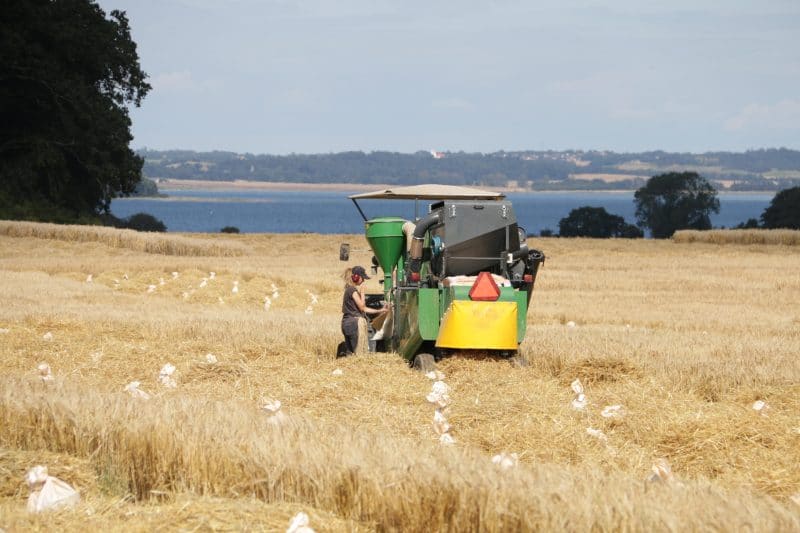
Sources of genetic diversity
The main source and the foundation of barley breeding is the breeder’s exemption in UPOV. “This secures access to the best and most relevant germplasm,” says Hjortshøj. “Besides that, we are involved in projects for screening and utilising genebank material, as well as material coming from mutated populations.” The access and benefit sharing regulations have so far not been an issue for Sejet. The firm’s main concern for future access to genetic resources is the granting of patents on native traits that have been made possible by EPO. “Because patents not only block the free access to the exact DNA/trait they are granted on, they also restrict the access to all the genetics with a linkage on the same chromosome,” says Hjortshøj, “and in practice even beyond!”
Hiles notes as pest and disease resistance shifts take place, coupled with increasing focus on managing soils sustainably, introducing attributes from some older ‘heirloom’ varieties becomes increasingly important. He notes that Syngenta has one of the broadest genetic pools for barley, from in-house development and acquisition.
“We routinely access gene banks for exotic sources of diversity,” says Strube. “And we believe the breeder’s exemption is one of the key achievements the breeding industry needs to maintain in order to keep the pace of innovations at today’s high level. We have sufficient access to new germplasm, but the Nagoya protocol leaves us with a lot of paperwork. Another, more recent challenge is the heterogenous deregulation of gene-editing tools, such as CRISPR-Cas, considered GMO in Europe but not in essentially the rest of the world. How to track mutations induced by gene editing versus naturally-occurring or random mutagenesis is currently impossible and this will cause a lot of headache here in Europe.”
Dunckel notes finding the ideal level of diversity within any breeding program is a challenging exercise, but that marker technologies have allowed breeders to assess genetic diversity within their own programs. She adds that breeders are often looking for novel traits such as disease resistance, and that barley yellow dwarf virus is an important new example of this in action. “A gene conferring widespread tolerance to this disease was identified in the 1950’s within some Ethiopian spring barley seed bank accessions,” she explains. “But only recently have barley varieties around the world been developed with this tolerance.”
Innovation and research
Looking to the future, Dunckel says rapid developments in many genetic technologies, artificial intelligence (AI) and new field tools such as drones offer many possibilities for accelerating breeding advances. Strube adds that improving breeding methodology through establishing genomic selection and faster generation cycling will continue to improve breeding efficiency, but agrees that in the decade to come, more use of ‘big data’ (genomic, metabolomic, transcriptomic) and AI will come into play.
Sejet is involved in high-throughput phenotyping in the field and genomic selection, says
Hjortshøj. “Hopefully in the near future, we will also get access to precision mutagenesis techniques such as CRISPR-Cas,” he says.
Hiles notes that the WHEALBI (‘WHEAt and barley Legacy for Breeding Improvement’) project at Wageningen University which finished up about a year ago has done a lot to address serious concerns across the cereals breeding community, concerns centred on running out of useful genetic variability within the pool of European wheat and barley due to ‘bottlenecks’ generated by selective breeding. Both the technologies and the germplasm developed in WHEALBI will be freely available to the entire wheat and barley breeding community.
“WHEALBI has successfully generated original high throughput sequence data of 1,000 wheat and barley genetic resources and has provided the breeding community with models and tools,” Hiles explains. “Through an increased understanding of the genome, breeders can make more favorable combinations of alleles when they select lines and can exploit a huge amount of untapped biodiversity of small grain cereals, including wild relatives and landraces. This will ensure higher yield potential and yield stability.”
WHEALBI leaders have also developed prediction tools for grain protein composition, he adds, which will enable breeders to more efficiently develop varieties with specific compositions, therefore best fitting end-user requirements such as high or low content, high dough strength or extensible proteins for biscuits. The WHEALBI project will also enrich breeding pools for disease resistance and specific adaptive traits to crop management systems which have been little considered up to now, says Hiles, enabling farmers going forward to grow their cereals under changing climate and low input conditions.
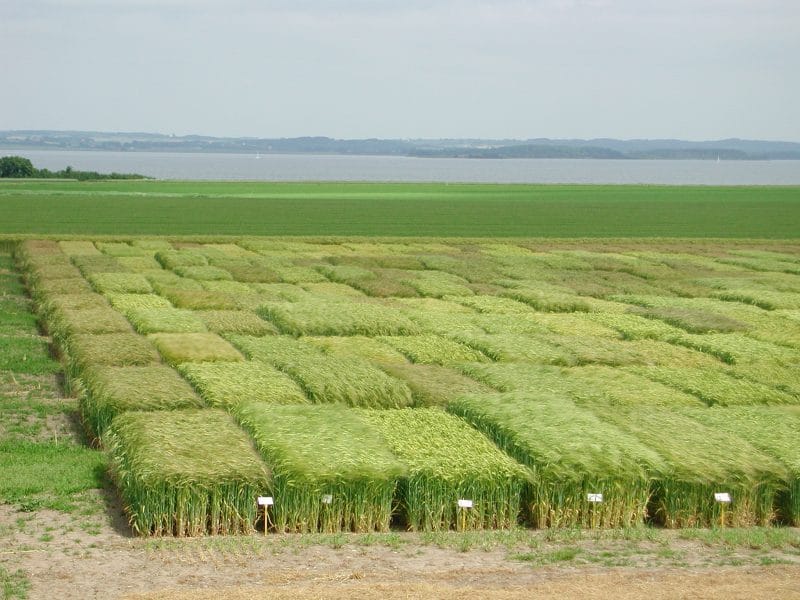
Looking ahead
As with other crops, barley breeders make sure through close relationships and ongoing feedback that their products will fit the needs of all the other partners in the supply chain. “The challenge is more to be the first to spot changes in the environment, whether being pests, climate or altered regulation on pesticides and fertilizer, that will affect the performance of the lines,” says Hjortshøj. “Through the VCU testing, and Farmer Union Trials in most countries, farmers can directly compare varieties and pick the ones that most fulfil their needs. This also gives us breeders good feedback and idea on the priorities among the growers.”
In the view of Strube, it’s not such a challenge in establishing a new feed barley variety as there are established routes to market. “But in malting barley, the biggest challenge is that the number of varieties demanded by the market is smaller, since only supply-chain-approved varieties will find an uptake in the market and offer the farmer an economic incentive,” he says. “To get a variety approved by the industry is an art in itself and requires patience and dedication, since nationally there are many different approval systems (Berliner Program, CBMO, AHDB Recommended List, MBC, Danish Preferred, AMBA, Heineken Green List etc.) which favour distinct quality profiles.”
Hiles believes that barley breeders must watch how society’s views on environmental impact evolve, as these will increasingly become central drivers for innovation within global food and drink brands, with new products being developed in light of externally verified sustainability principles. At the same time, the needs of the farmer are critical.
He adds that significant time must continue to be spent understanding the crop protection regulatory landscape, so a view of potential active ingredients available for use in five to fifteen years is understood. “Having a view on what products will be available to farmers to manage certain pest and diseases will determine the priorities and focus for plant breeders when making selections based on natural resistances,” he notes. “Finding the right combination of yield, agronomics and quality attributes that ensure farmer, end user and societal needs are met. Many breeders have developed some exceptionally high-yielding varieties that just don’t meet the needs of malting industry.”
Dunckel agrees with the view that barley breeders must continue to monitor societal trends as well as environmental challenges (climate change, EU regulations, new diseases) to ensure their programs are relevant. “Farmers have nowadays access to a broad portfolio of varieties from multiple seed companies, but they can also always grow other crops in their rotations,” she says.
“We feel challenged to make sure that the barley crop remains competitive and a viable crop for the farmer and the industry. For that, it’s important to collaborate intensively with all breeders in the industry by exchanging germplasm and giving each other access to traits.”


